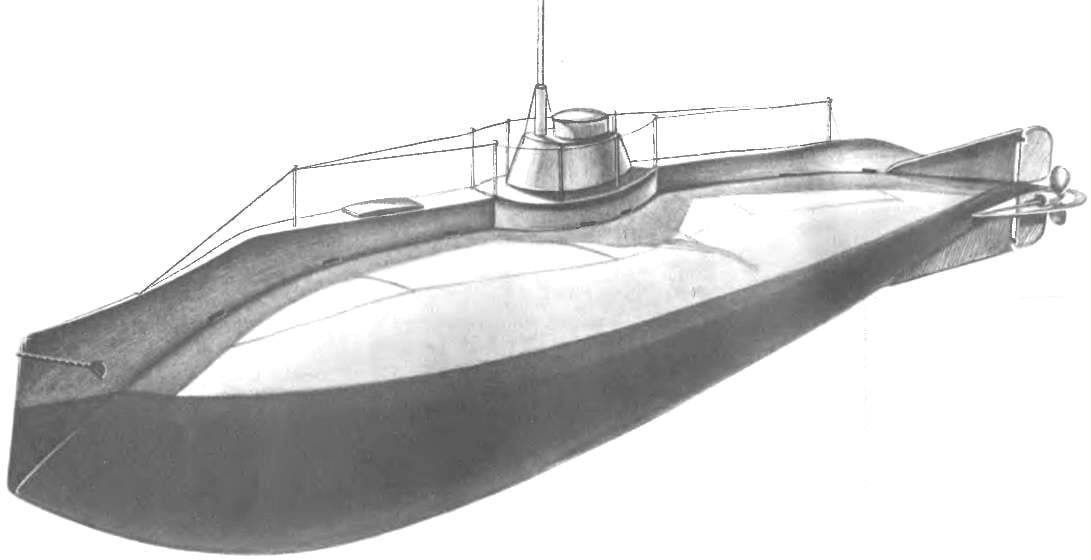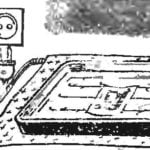 (Continued. The beginning see in number 10, 1973). Most Maritime powers after the Russo-Japanese war, the maximum funds allocated for the construction of dreadnoughts and sverhdrednoutami. The development of mines was paid, although less, but some serious attention. As for submarines, this is a matter between the Russo-Japanese and imperialist wars have reigned complete confusion.
(Continued. The beginning see in number 10, 1973). Most Maritime powers after the Russo-Japanese war, the maximum funds allocated for the construction of dreadnoughts and sverhdrednoutami. The development of mines was paid, although less, but some serious attention. As for submarines, this is a matter between the Russo-Japanese and imperialist wars have reigned complete confusion.
The first boats that appeared in Russia after the war, its origin was obliged feverish and not entirely meaningful activities, covering the Maritime authority in connection with the commencement of hostilities.
Krupp managed to draw up a contract so skillfully that without paying any penalties, failure to pass ordered in March 1904, three boats — “Carp” (31), “Karas” and “Kambala” — only in autumn 1907.
These boats were set Kertinge engines working on heavy fuel oil.
Although they were developed given the capacity of 200 HP, they were insufficiently reliable and convenient. So, on the surface, it was necessary to install heavy and high exhaust pipe, from which the day erupted clouds of white smoke, and at night — sparks and even flames. Before immersion
stopper engine and removed the pipe, which greatly increased the time needed to dive. In 1908, these boats were transported by rail to Sevastopol, where, together with two boats of the Holland — “Salmon” and “pike” — was the first in the Black sea “separate division of submarines.”
In 1906 the naval Ministry ordered the Metal factory pilot boat, designed by S. Drzewiecki. Enlisted in the Navy in 1908, this boat is “Mail” (32) made history as the first in the twentieth century an underwater vehicle with a single engine. The Drzewiecki refused elektrodvigateli. Instead of batteries he installed it on the boat 45 compressed to 200 ATM. air, which powered the engine. Although the boat showed good results, its main drawback bubble trail while moving under the water proved fatal, and in 1913 she was excluded from fleet lists.
An interesting feature of the Russian boats of this period was extraordinarily powerful torpedo armament. While foreign boats were installed 1-2 tubular torpedo tubes on the Russian boats, the number of torpedo tubes was 4-8. This increase was primarily due to the rotary lattice devices designed by S. Drzewiecki, installed in the superstructure. This type of weapon for a long time remained in the domestic boat, designed by I. diamond.

Among the pioneers of submarine drums took a seat next to Holland and Globetm, because the designer created the three main types of submarines that were developed by other specialists.
Bubnov proposed to place the lungs, communicating with outboard water tank in the bow and stern than was achieved at the maximum relief of the pressure hull. But “Dolphin” and “Whale” because of the spacing of the tanks arose longitudinal vibrations of the hull when submerged and submerged during. First Bubnovsky boat that this deficiency was eliminated was the “Lamprey” (33).
To work on the “Lamprey” Bubnov led low seaworthiness of the first submarines. Not when setting a goal to design a production boat, it is in the design of “Lamprey” introduced several radical innovations. Thus, the “Lamprey” was the world’s first submarine with diesel-electric installation. For the first time in the practice of shipbuilding drums used the ball end of the bulkhead. The buoyancy of the “Lamprey” was three times more than the “Dolphin”. As a further development bubnovskogo type of boat, the S. S. minnow at the same time, for the first time had not lattice, and tubular nasal torpedo tubes — remote machine gun on the bridge.
Almost simultaneously with the “Lamprey” drums started to design the “Sharks” (34) boats with three times a large displacement, is able to make long transitions and to strike the enemy in his ports and bases. Enlisted in the Navy in 1911, “Shark”, with 8 torpedo tubes until the beginning of the first world war was the most seaworthy and most powerful weapons boat in the world. Three-shaft diesel-electric installation and a large reserve of buoyancy allowed her to swim in the Baltic sea even in stormy weather.
Created as a powerful torpedo boat, the “Shark” in 1915, was immediately equipped with a device for setting a hidden mine fields. Combat experience has confirmed that the drums had foreseen as early as 1907, when he wrote the miner N. Schreiber: “I came to the conclusion about the possibility of putting with the boat 20 minutes boom…” But the idea of a special underwater mine-layers did not belong Bubnova her long and hard was developed by the Russian inventor M. Raids.
He was stationed at Port Arthur during the Russo-Japanese war. “The first thought to arm the mines boom the submarine, wrote of the Raids came to me in the day of the death of the battleship “Petropavlovsk” detonated a Japanese mine, what I was.”
Developed by Naletova boat to protect portentously harbour was not completed, and the inventor was forced to blow it up, so she went to the Japanese. And only ten years after a long ordeal and red tape developed by the inventor of the minelayer “Crab” came in first combat mission — the mining of the Bosporus Strait.
On the mines, put “Crab”, was soon blown up by the German cruiser “Breslau”.
Crab, armed with 60 mines, two nasal and two lattice torpedo tubes, two guns and a machine gun, proved to be a valuable warship. The need for underwater mine-layers was so acute that in the course of the war had to fit torpedo boats, minefields, and even to re-develop the new projects.
G. SMIRNOV



